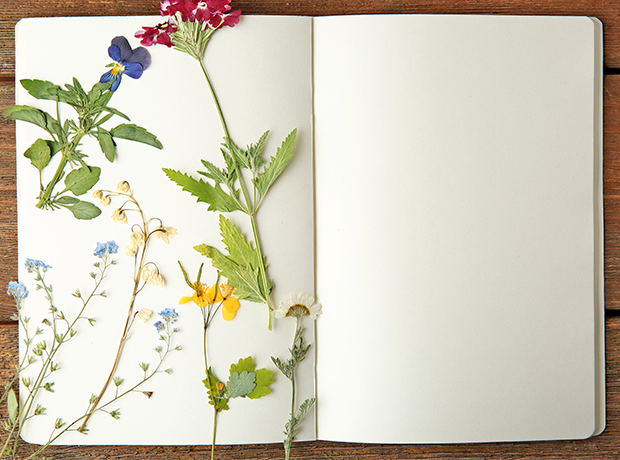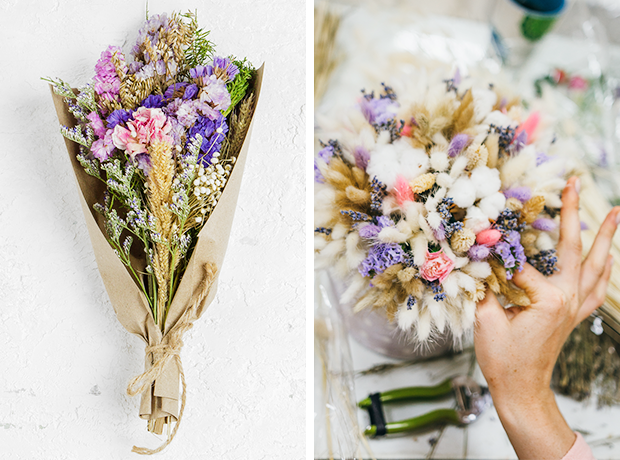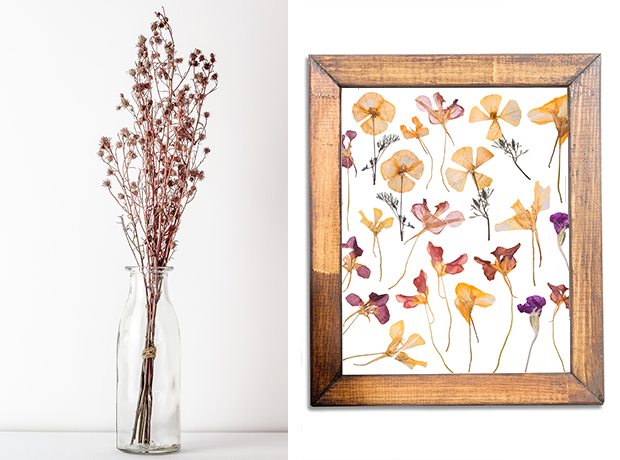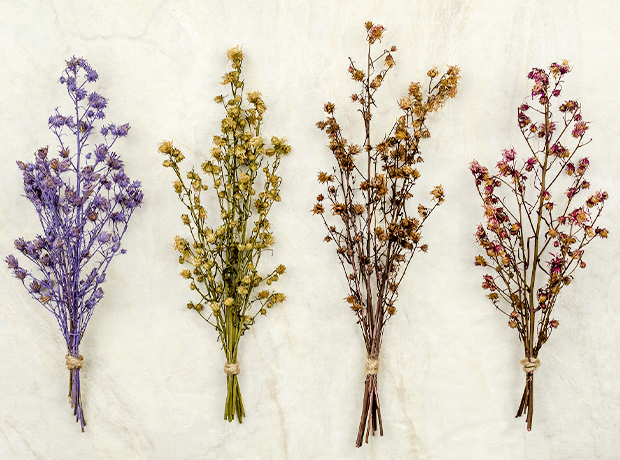Embrace Sustainability With Dried Flowers
Dried flowers are making a statement this season, and we're loving it! Perfect for every occasion, these design staples add a beautiful touch of texture and promote sustainable practices. By choosing to preserve flowers you are increasing their life span and viability.
From bouquets to pressed flowers, more customers are seeking out this look for their everyday flower, wedding, and event requests. Drying flowers creates a perfect keepsake for them to remember their special day, and of course it's also beneficial for you! Have extra stems leftover from a big event? Drying is a great alternative to discarding "unwanted" flowers. There are many ways to dry out and design dried flowers, but the "best" method depends on your preference and timing.
Different methods for drying flowers?
Hanging

The most traditional and earliest-known method of drying flowers is by simply hanging them. First, remove all leaves and tie the stems together in small bunches. Use rubber bands or soft string, they will move with the drying flowers preventing damage to the stems. Next, hang your bunches (stems up) in a cool, dry, dark place. Depending on your flower choice and environment, expect one to four weeks to achieve complete dryness. Hanging takes a bit more time, but it's the best way to preserve long stems when creating a large vase arrangement.
This method is perfect to share with your clients that are looking for a keepsake of their special event.
Silica Gel

You know those little packets labeled "do not eat" that seem to be included with every new item you buy? That's silica gel, a crystal-like substance that helps remove moisture. For anyone in a time crunch, this is the perfect method for quick result. Pick up some Silica gel at any local craft store and get your microwave ready.
The microwaves preserve the flower color and structure better than other techniques (especially with larger-headed flowers like roses). Start by covering your flowers with the silica gel in a microwave-safe container for about 2-4 minutes. Be sure to use enough silica gel to completely cover the flowers. Periodically, check the flowers and adjust heating time as needed. Immediately cover your container once removed from the microwave and keep covered for at least 24 hours.
TIP: Most silica gels turn blue once moisture is absorbed. Use this as an indicator of when to remove your flowers from the microwave.
Pressed

Pressing flowers is an old-world preservation technique, and also one of the simplest. Start by lining a heavy book with paper (preferably one that will soak up moisture) and place your flowers flat. Close the book, making sure the flowers stay flat, and leave closed for about a week. Pressing flowers works best with individual stems and smaller heads.
No matter the method or design choice you choose, be sure to always keep dried flowers out of direct sunlight to help preserve their colors.
Design trends
Arrangements & Bouquets

Beautiful dry flower arrangements and bouquets have become a favorite in the last decade. Whether incorporated with fresh blooms and greenery or completely on their own, dried flowers add a unique and textural element to every kind of design.
Re-usable Decor

Dried flowers make the perfect accent for any event. Use single stems or small bunches on gift or food tables to help tie in an overall theme or color.
Pressed flowers are not only a great way to dry flowers, it's also a fun way to display them! Place them in a picture frame or shadow box and you have an easy piece of art. This trend is ideal for your eco-friendly customers. They'll not only be able to keep the flowers but display them in their homes.
Have you hopped on the dried flower trend? Share your work with us on Facebook & Instagram!

